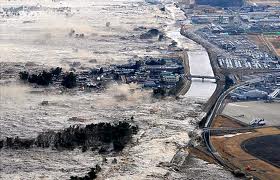A recent New York Times article described protests by survivors of Japan’s March 11 earthquake and tsunami, including a mother with a three-year-old child clad in a shirt reading “please let me play outside again.” Survivors gathered in the streets of Tokyo in mid-June to express their anger over the government’s handling of the Fukushima Daiichi Nuclear Power Plant meltdown. While protesting is not a typical part of the Japanese culture of conformity, people are questioning whether the government can be trusted; in the ongoing uncertainty, many worry about their food and health.

Since the disaster, Tepco has announced losses of $15 billion; its shares have fallen 91 percent. The government’s bailout plan would consist of contributions from other nuclear power operators and private contributors which Tepco would eventually have to repay. According to a June 28 Reuters report, “The proposal faces weeks of challenges, however, with both ruling party and opposition lawmakers intent on scuttling the legislation or demanding amendments in return for their support. Some critics have urged the government to allow a court-led bankruptcy and rehabilitation, which would wipe out the equity of shareholders.”
The massive tsunami, which struck one hour after the earthquake, hit the power plant, flooding the generators and destroying the outdoor fuel tanks of the emergency generators. This caused all power to be lost, so normal cooling systems stopped working, temperatures rose and water evaporated. When reactor temperatures exceeded 1,000 degrees Celsius, the reaction of water and zirconium createed hydrogen, which collected near the ceiling of reactor buildings, causing explosions. More than two months later, the heat, radiation and hydrogen have yet to be contained, according to a story by Jun Tateno, a professor at Chuo University specializing in nuclear energy.
Over 600 square kilometers of radiation has leaked from the plant. On May 31, a gas tank exploded and oil was reported to have poured into the ocean. On June 13 excessive levels of highly toxic strontium have been found in the seawater and groundwater near the plant’s number one and two reactors, according to the Wall Street Journal. Strontium accumulates in bone and bone marrow, causing bone cancer and leukemia. Six more workers may now have exceeded radiation exposure limit, bringing the total to eight, the government reported on June 13. Tepco predicts that the reactors will be brought under control by October at the earliest.
According to National Public Radio, Tepco has been continuously pumping water into the plant since the disaster hit in order to keep the reactors cool; at this point, the radioactive water could fill 40 Olympic-sized swimming pools. Several companies have been hired to build a water decontamination plant. The cleaning is expected to take a few months and afterwards, depending on the results, the water may be dumped back into the ocean.
According to reports, about 100,000 evacuees still sleep in gymnasiums. There are 1,670 children living within 12-20 miles of the Fukushima power plant, the emergency preparation zone. While the government recommends that pregnant women, children and people who require medical care not remain in this area, it has not mandated their evacuation.
Please pray for the well-being and recovery of those affected by this devastating event.
